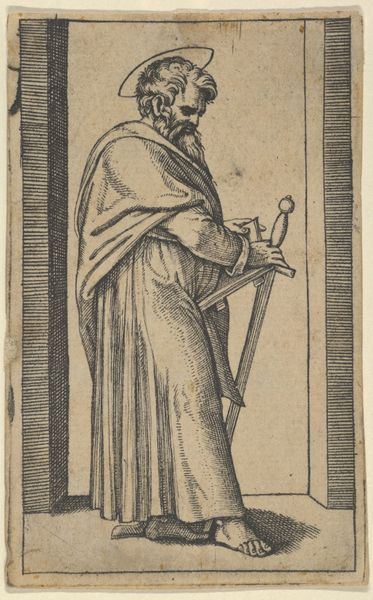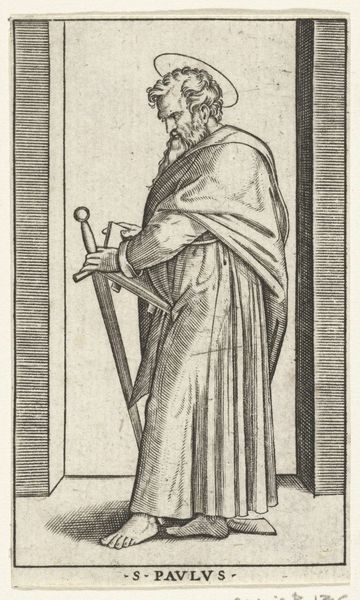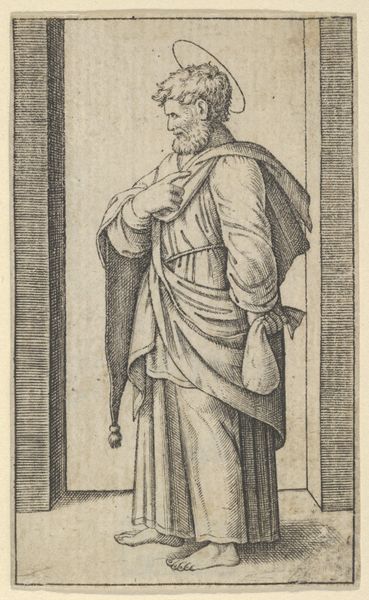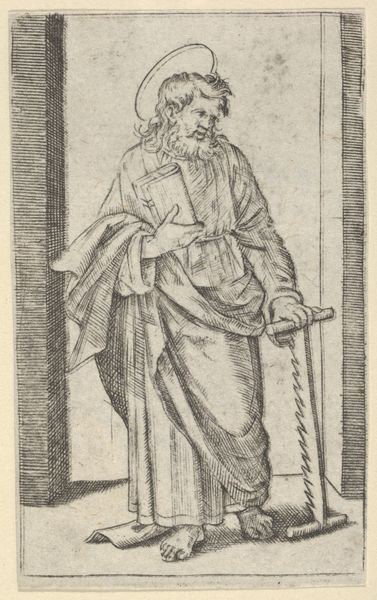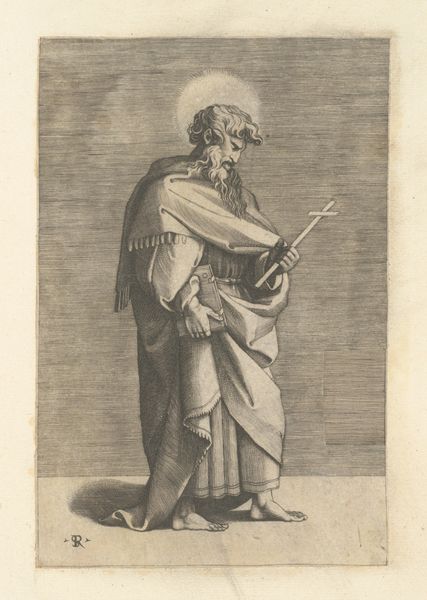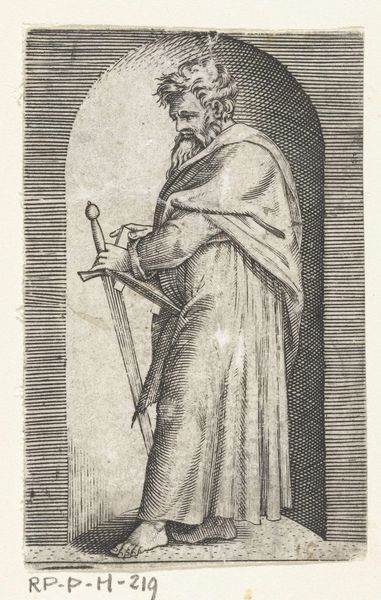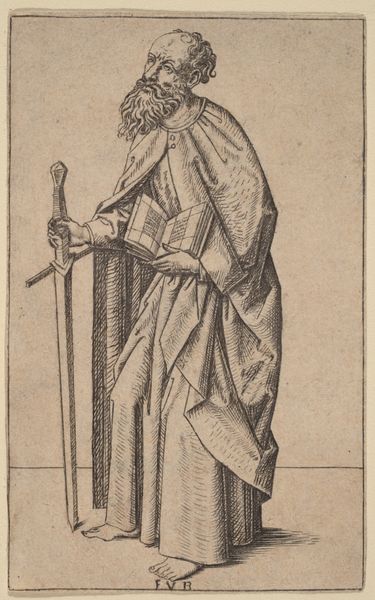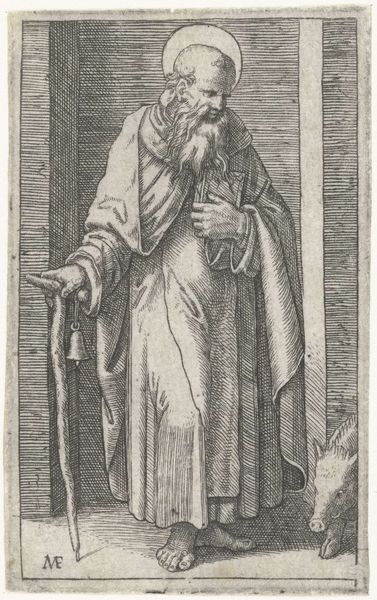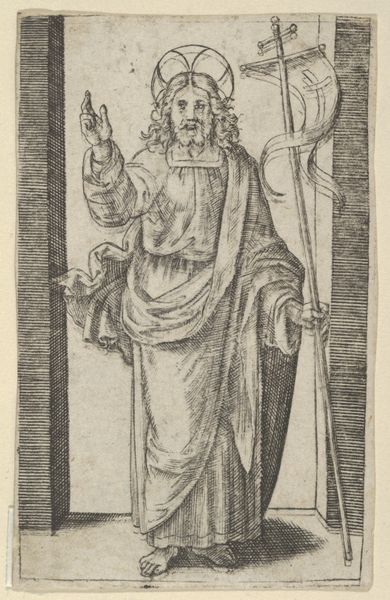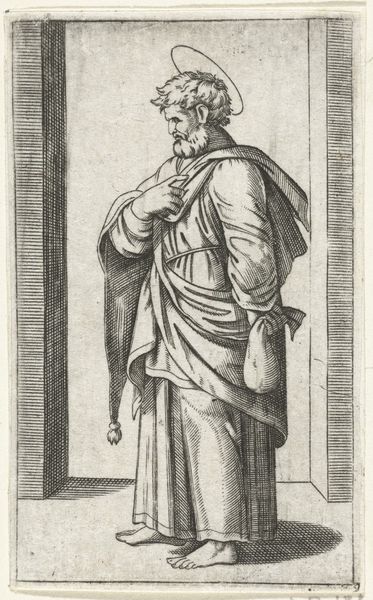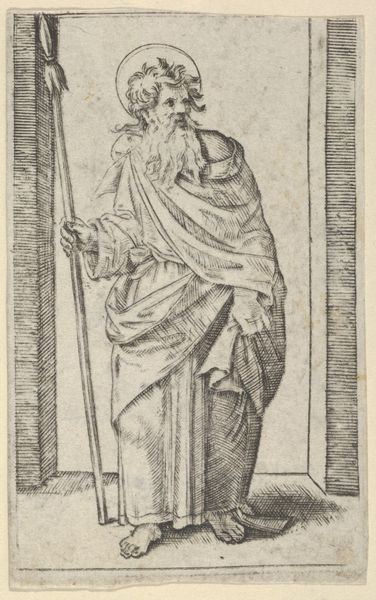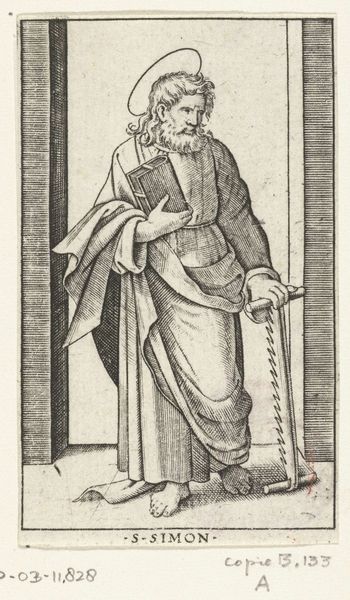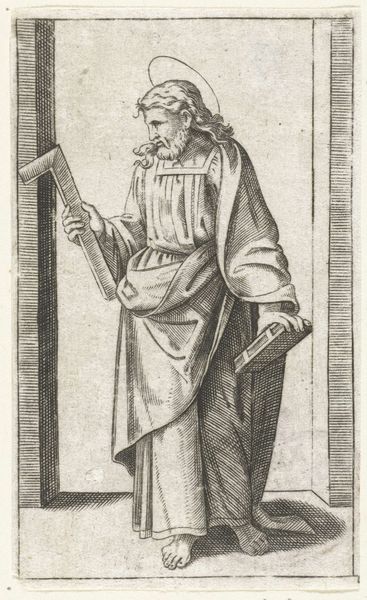
Saint Paul, sword in his right hand, from "Piccoli Santi" (Small Saints) 1495 - 1532
0:00
0:00
drawing, print, engraving
#
drawing
# print
#
history-painting
#
italian-renaissance
#
engraving
#
sword
Dimensions: 3 1/8 x 1 7/8 in. (8.0 x 4.7 cm)
Copyright: Public Domain
Editor: Here we have Marcantonio Raimondi's "Saint Paul, sword in his right hand, from 'Piccoli Santi'," dating roughly from 1495 to 1532. It's an engraving, small in scale, but packed with detail. I'm curious about the sword; its prominent placement seems to carry a certain weight. How would you interpret this work? Curator: The sword, meticulously rendered through engraving, tells us a lot about the materiality of power in the Italian Renaissance. Engravings, as reproducible images, served to disseminate ideas. How does seeing Saint Paul represented with a sword, an instrument of violence, challenge or reinforce conventional notions of saintliness and devotion communicated by other devotional objects of the time? Think about who would have commissioned this print and for what purposes it might have been used. Editor: So, it's less about the spiritual meaning and more about the social implications of depicting a saint with such a symbol of earthly power? Curator: Precisely. Consider the labor involved: the engraver's skill in meticulously transferring the design to a metal plate, then the act of printing and distribution. These were all highly skilled processes, controlling the production and consumption of imagery, influencing popular devotion and cultural values of the era. Also, compare this print to similar engravings. Is there a "standard" representation of Saint Paul during this period? Does this stray from established conventions? How and why? Editor: That's fascinating! I hadn't considered how the material process itself could be so integral to understanding the message. Curator: The key lies in unraveling the social and material conditions that give rise to an artwork. By examining the process, labor, and distribution, we can gain richer insights into the complex interplay between art and society. Editor: I see now! Thanks to your perspective, I understand it more completely now. I will definitely keep those production questions in mind. Curator: Wonderful. Remember to consider not just what art depicts but how it is made and what role it plays in its time.
Comments
No comments
Be the first to comment and join the conversation on the ultimate creative platform.
